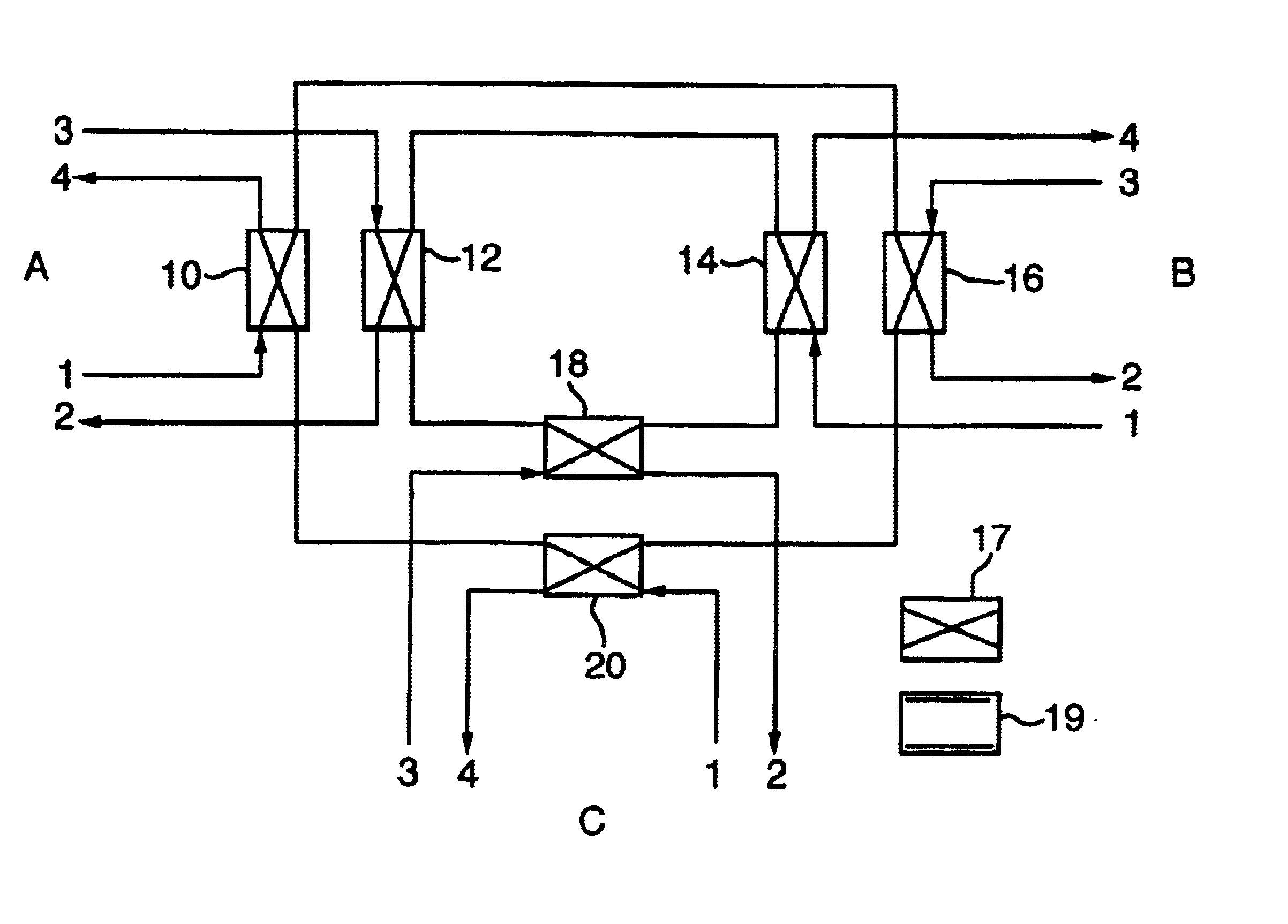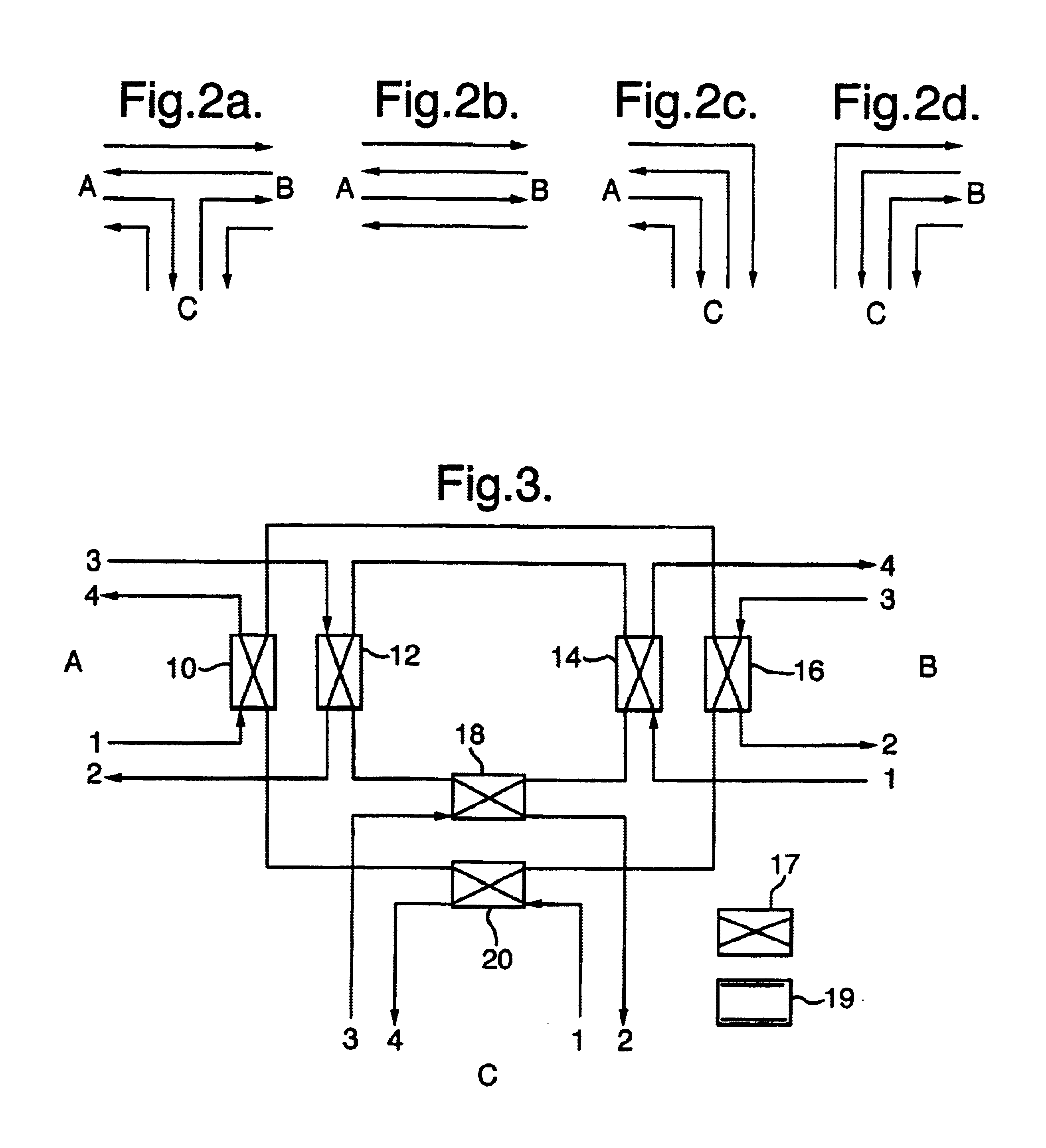Branching unit and system for underwater optical communication
a technology of optical communication and branching unit, which is applied in the direction of line-transmission details, electromagnetic repeaters, instruments, etc., can solve the problems of prolonging the decay of magnetic field and thus the dropout time of relays, high current surges that may damage relays, etc., to prolong the decay of magnetic field and increase relay dropout time
- Summary
- Abstract
- Description
- Claims
- Application Information
AI Technical Summary
Benefits of technology
Problems solved by technology
Method used
Image
Examples
Embodiment Construction
[0032]Referring now to FIG. 2, there is shown various possible routeings of a basic two-fibre-pair branching unit having branches A, B and C. In FIG. 2a there is shown a default configuration where one pair of inputs / outputs on branch A are optically routed directly to a first pair of corresponding output / inputs of branch B—the so-called fast data path for connection in the main data highway of a communication system. A second pair of inputs / outputs on branch A are optically routed to a corresponding first pair of output / inputs of branch C whilst branch C has a second pair of input / outputs which are routed to a corresponding second pair of output / inputs of branch B. This forms a so-called slow data path for communication between branch A and B via C.
[0033]The present invention seeks to permit optimal usage of the fibers in dependence upon traffic requirement and destinations and under fault conditions due to cable damage. In the event of no traffic requirement between A or B and C t...
PUM
 Login to View More
Login to View More Abstract
Description
Claims
Application Information
 Login to View More
Login to View More - R&D
- Intellectual Property
- Life Sciences
- Materials
- Tech Scout
- Unparalleled Data Quality
- Higher Quality Content
- 60% Fewer Hallucinations
Browse by: Latest US Patents, China's latest patents, Technical Efficacy Thesaurus, Application Domain, Technology Topic, Popular Technical Reports.
© 2025 PatSnap. All rights reserved.Legal|Privacy policy|Modern Slavery Act Transparency Statement|Sitemap|About US| Contact US: help@patsnap.com



